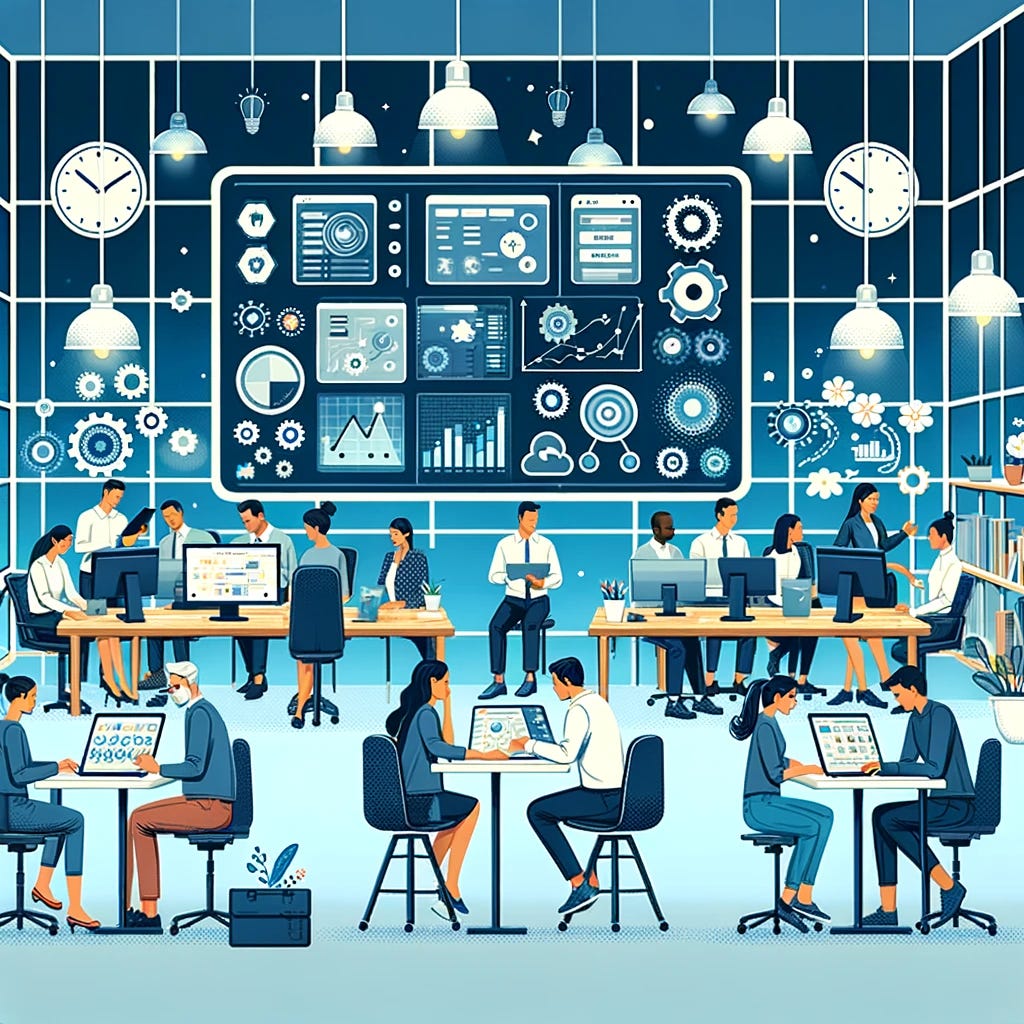Creative Collaboration Techniques for Neurodiverse Teams
Effective collaboration within such teams requires understanding and leveraging these differences.
In today’s increasingly diverse workplaces, teams often consist of a mix of neurotypical and neurodivergent members, each bringing unique perspectives and strengths. This blog post explores strategies to enhance collaboration in neurodiverse teams, focusing on communication techniques, project management tools, and team-building activities designed to cater to various cognitive styles.
Understanding Neurodiversity in Teams
Neurodiversity includes a variety of conditions such as autism, ADHD, dyslexia, and others, each affecting how individuals perceive and interact with the world. In a workplace, this diversity can be a formidable asset, leading to innovative solutions and creative problem-solving. However, without the right strategies in place, these differences can also present challenges in team collaboration.
Effective Communication Techniques
1. Structured Communication: Implementing clear, structured communication practices helps minimize misunderstandings and ensures that everyone is on the same page. This can include standardized templates for emails, regular scheduled meetings, and clear agendas distributed in advance.
2. Visual Tools: Many neurodivergent individuals are visual thinkers. Using tools like flowcharts, diagrams, and visual aids can help in conveying complex information more effectively than verbal explanations alone.
3. Choice of Communication Channels: Some team members may prefer direct communication through email or chat, while others might excel in face-to-face interactions. Offering multiple communication channels can cater to these preferences, ensuring that all team members feel comfortable and engaged.
Project Management Tools
1. Task Management Software: Tools like Trello, Asana, or Microsoft Teams allow team members to visualize workflows, track progress, and manage tasks according to their strengths. These tools are particularly helpful for those with ADHD, who may struggle with organization and prioritization.
2. Time Management Apps: Applications like Pomodoro timers or time-tracking software can help team members manage their working hours more effectively, allowing for breaks and varied work rhythms.
3. Collaborative Platforms: Using collaborative platforms that support real-time editing and updates, like Google Docs or Slack, can enhance synchronous and asynchronous collaboration, catering to different working styles and time zones.
Team-Building Activities
1. Strength-Based Roles: During team-building sessions, encourage activities that allow members to identify and share their strengths and preferred working styles. This not only builds mutual respect but also helps in aligning tasks with individual strengths.
2. Inclusive Team Challenges: Design challenges that require diverse cognitive approaches, ensuring that tasks are not biased towards any particular neurological profile. This might include problem-solving games that need both creative thinking and detailed analysis.
3. Regular Check-Ins: Create a routine of regular check-ins where team members can discuss their experiences and challenges in the team. These sessions can be structured to ensure that everyone has a voice, and can contribute their thoughts and feedback.
Creating an Inclusive Environment
1. Education and Awareness: Conducting workshops on neurodiversity can help build understanding and empathy within the team. Awareness of different neurological conditions and how they affect work can lead to more supportive interactions and a more inclusive workplace culture.
2. Adaptable Workspaces: Create a workspace that is adaptable to various needs, such as quiet zones for those who need minimal sensory stimulation or vibrant, dynamic areas for those who thrive in lively environments.
3. Feedback Mechanism: Implement a robust feedback system that allows team members to express their needs and suggestions anonymously if they prefer. This can help managers and team leaders adjust strategies in real-time and address any issues promptly.
Conclusion
Fostering effective collaboration in neurodiverse teams requires a multifaceted approach, tailored to accommodate the unique needs and strengths of all team members. By implementing adaptive communication techniques, utilizing flexible project management tools, and engaging in inclusive team-building activities, organizations can harness the full potential of their neurodiverse workforce. This not only enhances productivity but also contributes to a more innovative and inclusive corporate culture. Embracing these practices ensures that every team member, regardless of their neurological makeup, feels valued and understood, paving the way for creative and collaborative success.

